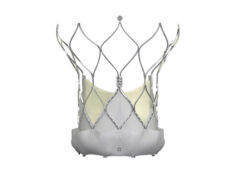
A new study published in Catheterization and Cardiovascular Interventions indicates that valve replacement, via surgery or transcatheter aortic valve implantation (TAVI), significantly increases survival at one year compared with balloon valvuloplasty in aortic stenosis patients with end-stage renal disease. It also suggests that there is not an association between duration and type of dialysis and one-year survival.
Authors Jose F Condado and Vasilis Babaliaros (Structural Heart and Valve Center, Divisions of Cardiology, Emory University School of Medicine, Atlanta, USA) and others report in the journal that both the benefits of surgical valve replacement and those of TAVI for aortic stenosis patients with end-stage renal disease are “unclear”, noting that previous studies have found that patients with end-stage renal disease who undergo surgical valve replacement have worse outcomes than patients who do not have the disease. They add that, in patients with end-stage renal disease, balloon valvuloplasty is viewed as a potential “palliative and less invasive therapy”.
In this present study, Condado et al performed a retrospective analysis of consecutive patients with end-stage renal disease who underwent balloon valvuloplasty, TAVI, or surgical aortic valve replacement between March 2007 and May 2015. “Due to the limited availability of TAVI at the beginning of our study period, most patients in our study were selected for valvuloplasty because they were non-surgical candidates,” the authors note.
Of 85 patients in the study, 25 underwent valvuloplasty alone, 30 underwent TAVI, and 30 underwent surgery. TAVI and valvuloplasty patients were older, less likely to have concomitant moderate/severe aortic regurgitation, and more likely to be in New Heart Association Class III/IV. Furthermore, there was a trend towards patients in the surgery group having lower Society of Thoracic Surgeons (STS) scores, which Condado et al say “could have become statistically significant with a larger sample size”.
There were no significant differences between groups in the rates of procedural success, composite early safety outcomes or 30-day complication rates. There was also no significant differences in the operative and 30-day mortality between groups, but one-year mortality was significantly increased in patients who underwent valvuloplasty (87% vs. 32% for TAVI and 36.7% for surgery; p≤0.001). The authors comment that this finding suggests that “the temporary haemodynamic benefit of balloon valvuloplasty (without major complications in our study) is enough to produce similar 30-day outcomes to TAVI or surgical aortic valve replacement. The 30-day benefit of valve replacement may not be apparent due to concomitant complications”.
In a cox-proportional model, a higher STS score and treatment with valvuloplasty alone were independent predictors of decreased one-year survival. “But surprisingly, we did not find an association between duration and type of dialysis, and one-year survival,” Condado et al state. They add that their data support the strategy that most patient with end-stage renal disease should undergo surgery or TAVI, “with balloon valvuloplasty reserved as bridge to replacement or as a palliative treatment for patients with an extremely poor prognosis (<30 days life expectancy)”.
Given that TAVI “can result in less intensive care unit time, less length of stay, and faster recovery” than surgery, the authors conclude: “Further studies are needed to validate our results, and to compare TAVI vs. surgery in this patient population.”
Babaliaros told Cardiovascular News: “Though TAVI has not been formally studied in patients with end-stage renal disease, these data suggests that TAVI is beneficial in this population. The decision on whether to send such patients who have aortic stenosis for surgical valve replacement or for TAVI will probably rest on their comorbid status and the long-term durability of the valves.”










